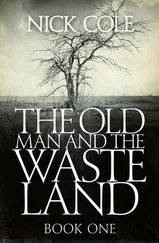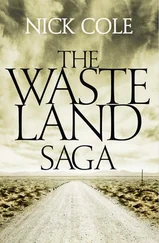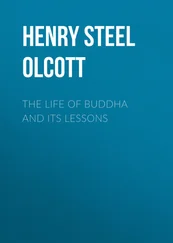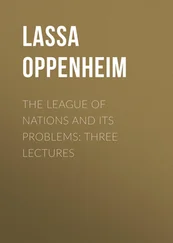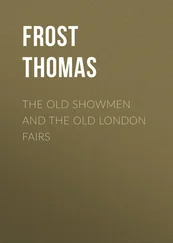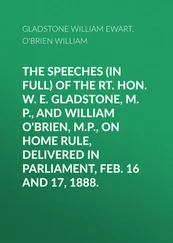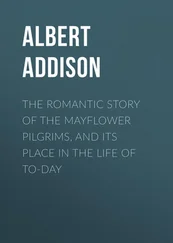William Bryan - The Old World and Its Ways
Здесь есть возможность читать онлайн «William Bryan - The Old World and Its Ways» — ознакомительный отрывок электронной книги совершенно бесплатно, а после прочтения отрывка купить полную версию. В некоторых случаях можно слушать аудио, скачать через торрент в формате fb2 и присутствует краткое содержание. Жанр: foreign_antique, foreign_prose, на английском языке. Описание произведения, (предисловие) а так же отзывы посетителей доступны на портале библиотеки ЛибКат.
- Название:The Old World and Its Ways
- Автор:
- Жанр:
- Год:неизвестен
- ISBN:нет данных
- Рейтинг книги:4 / 5. Голосов: 1
-
Избранное:Добавить в избранное
- Отзывы:
-
Ваша оценка:
- 80
- 1
- 2
- 3
- 4
- 5
The Old World and Its Ways: краткое содержание, описание и аннотация
Предлагаем к чтению аннотацию, описание, краткое содержание или предисловие (зависит от того, что написал сам автор книги «The Old World and Its Ways»). Если вы не нашли необходимую информацию о книге — напишите в комментариях, мы постараемся отыскать её.
The Old World and Its Ways — читать онлайн ознакомительный отрывок
Ниже представлен текст книги, разбитый по страницам. Система сохранения места последней прочитанной страницы, позволяет с удобством читать онлайн бесплатно книгу «The Old World and Its Ways», без необходимости каждый раз заново искать на чём Вы остановились. Поставьте закладку, и сможете в любой момент перейти на страницу, на которой закончили чтение.
Интервал:
Закладка:
They invented gunpowder, and yet they equipped their soldiers with bows and arrows down to the present generation.
They invented the printing press, and yet until recently they had scarcely any newspapers and but few books. I shall speak in another article of the improvement in this direction, but as an evidence of the little use made of the printing press even now, I record the fact that in a four days' ride (at present the train runs only in the daytime) from the capital of the empire to Hankow, through a densely populated section, we did not see a man reading a paper or hear the voice of a newsboy.
Equally without justification is the boast of great learning among the people. They have had no educational system and their children have had to rely upon private schools, a few families getting together and hiring a teacher. Even then the main purpose of their higher education was to obtain a government position. As only a very limited number could possibly be selected at the competitive examinations held by the government, there was small incentive to study and the written language, with two hundred and fourteen radicals and twelve hundred different characters, was enough to discourage even the ambitious. A Chinese official informed me that not more than one man in a hundred could write a letter and that not more than one in ten could understand a letter when read to him.
The object of the schools, such as they had, was to cultivate the memory and to teach the pupils to write essays expounding the doctrines of the Chinese sages. All of the schools used the same text book, the primer in universal use having been prepared over eight hundred years ago. Education was limited in the number who received it and limited in the amount provided, and the course of instruction was fossilized. None of the students were taught anything about the outside world and but few of the people were students. It is sufficient evidence of the absolute failure of their educational system to compare this great empire, containing approximately one-fourth of the population of the globe, with even the smaller states of Europe in the production of scientists, scholars and poets. China has had diplomats and astute statesmen, but these have been developed in the school of experience rather than in halls of learning. Considering the educational opportunities furnished, it is astonishing that she has produced any great men at all.
China has her religions and they have doubtless exerted a moulding influence upon the people, but the influence has not been an unmixed good. Take, for instance, ancestor worship; it contains a germ of good, in that it teaches respect and care for parents, but the spirit has been lost in the observance of the letter until the welfare of the living is neglected, that senseless sacrifices may be made to the dead. At Canton we visited a place called "The Place of the Dead." It is connected with a Buddhist temple and is just outside the city wall. There are some four hundred rooms in the group of buildings and nearly every room contains a coffin. Here the well-to-do deposit the body of an ancestor and keep incense burning as long as they can afford to pay for it. Rent must be paid for the rooms; the light must be kept bright; food and drink must be offered to the departed each day and the incense must be paid for. As someone has remarked, it costs more to care for a dead ancestor than a live one. We saw one coffin that had cost three thousand dollars; it had been in the building for sixteen years and had been moved from one apartment to another, a cheaper one being chosen each time as the resources of the family declined. In some cases the families have become so poor that they can neither pay rent nor buy a burying plot.
There is also at Canton an ancestral hall where for a specified sum the name of an ancestor may be inscribed on a little wooden tablet; incense is also burned here, too. Foreign residents relate instances where servants have spent three years' income in burying a parent, the money being borrowed and gradually repaid from the earnings. Besides the first cost of burial, there must be frequent pilgrimages to the grave. It is within the bounds of truth to say that the money expended in elaborate funerals, in sacrifices to the dead, and in periodical pilgrimages to tombs would have gone far toward educating and enlightening each rising generation – and who will say that respect for the dead can better be shown by formal ceremonies than by a proper regard for the welfare of the descendants?
The tombs of the royal family are always objects of interest to the tourist. The most famous of these tombs are north of Pekin and so near to the great wall that they are usually visited at the same time, three or four days being required for the trip. There are other tombs of less renown still nearer to Pekin, while the tomb of the first emperor of the Ming dynasty is just outside the walls of Nanking. Some of these tombs are mere masses of masonry now, but all were once richly carved. The avenues leading up to these tombs are lined with large stone figures of men and animals. These are arranged in pairs, one on each side of the road – two huge warriors, two priests, two elephants standing, two elephants kneeling, two camels standing and two kneeling, two horses standing and two kneeling, and lions, bears and other animals in like positions. These figures are put near the tomb that the ruler may be supplied with the things needful for his happiness in the spirit world. And, speaking of tombs, the worship of ancestors is destined to make China a vast graveyard, if, as now, graves cannot be disturbed. It will be remembered that the Chinese government cautioned the Russians and Japanese not to trespass upon the graveyards at Mukden, where a number of Manchu emperors are buried. The graves of the masses are as securely regarded, although distinguished merely by a mound. In the neighborhood of the large cities the cemeteries cover many square miles, and as they are constantly added to and never diminished, they occupy an ever increasing area. In the agricultural districts the burying grounds are scattered through the fields, each family having its own plot. Sometimes when the family has died out, the mound is neglected and the coffin is exposed. At Shanghai and at Nanking we saw a number of coffins in the fields which had never been covered.
The temples of China are interesting, but are generally in a state of decay. The Confucian temple at Pekin is visited once a year when sacrifices are made to China's supreme sage. The court of the temple is filled with gnarled and knotted cedars of great age, in which a colony of crows was chanting a requiem when we were there. There are also in the court numerous tablets of marble, each resting on the back of a stone turtle and bearing inscriptions; there are other tablets bearing quotations from the writings of Confucius.
At Canton our guide took us to the temple of the five hundred gods. They represent Buddhistic saints, are life size and each has an incense urn before him. One of the gods has a very long arm, he being the one who puts the moon up at nights; another represents a saint who cut open his breast and exposed an image of Buddha to prove his fidelity to the faith.
(Our guide at Canton was Ah Cum, who had conducted travelers through the city for more than forty years and has brought up his sons to the same profession. I mention his name for the benefit of any readers of these lines who may chance to visit, as every tourist should, this most Chinese of Chinese cities.)
There is in the vicinity of Pekin a temple with several thousand images of Buddha, but they are small and made of clay, the original bronze images having been carried away by the foreign troops during the Boxer troubles.
Close to the walls of the city of Pekin stands what is called the Yellow Temple, a rare work of art. The figures representing incidents in the life of Buddha are very skillfully carved and one can not help feeling indignation at the vandalism of the foreign soldiers who, during the Boxer troubles, defaced this ancient monument. By far the most impressive and elaborate religious structure in China is the "Altar of Heaven," not far from the city of Pekin. It was built under the Ming dynasty five hundred years ago and is still visited twice each year by the emperor, who here offers sacrifices to heaven. The sacrificial altar is built entirely of white marble. It is a triple circular terrace, the base being a little more than two hundred feet in diameter, the middle terrace one hundred and fifty feet and the top terrace nearly a hundred feet, each terrace being enclosed by a beautifully carved balustrade. It stands about eighteen feet high, and the emperor ascending to it alone, kneels at midnight and, as the representative of the whole people, makes his offering to heaven. A bullock without a blemish is used as the offering on these occasions. In architecture the altar reminds one of the Greek structures, while some of the features of the ceremony recall the rites of the Israelites as described in the Old Testament.
Читать дальшеИнтервал:
Закладка:
Похожие книги на «The Old World and Its Ways»
Представляем Вашему вниманию похожие книги на «The Old World and Its Ways» списком для выбора. Мы отобрали схожую по названию и смыслу литературу в надежде предоставить читателям больше вариантов отыскать новые, интересные, ещё непрочитанные произведения.
Обсуждение, отзывы о книге «The Old World and Its Ways» и просто собственные мнения читателей. Оставьте ваши комментарии, напишите, что Вы думаете о произведении, его смысле или главных героях. Укажите что конкретно понравилось, а что нет, и почему Вы так считаете.





